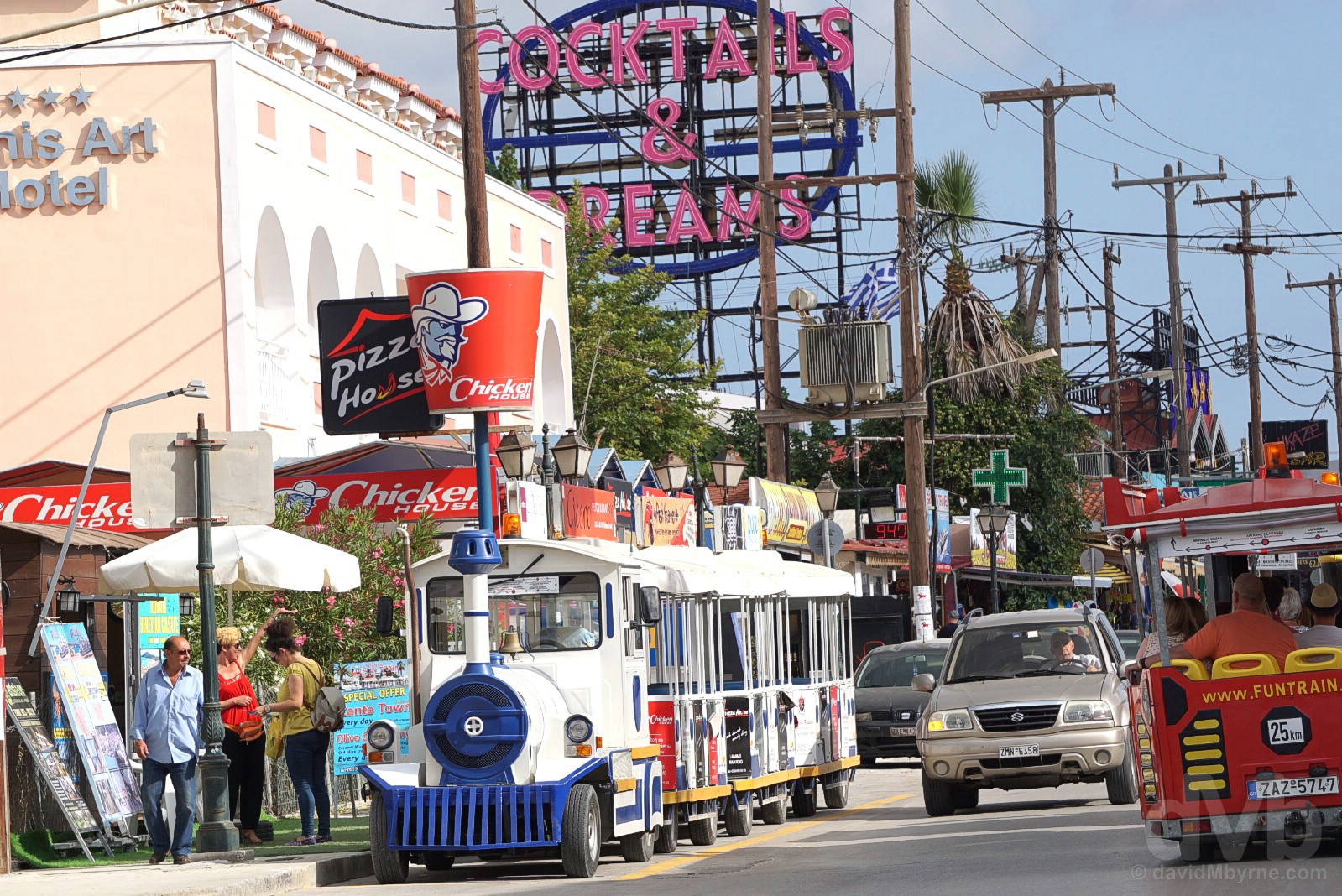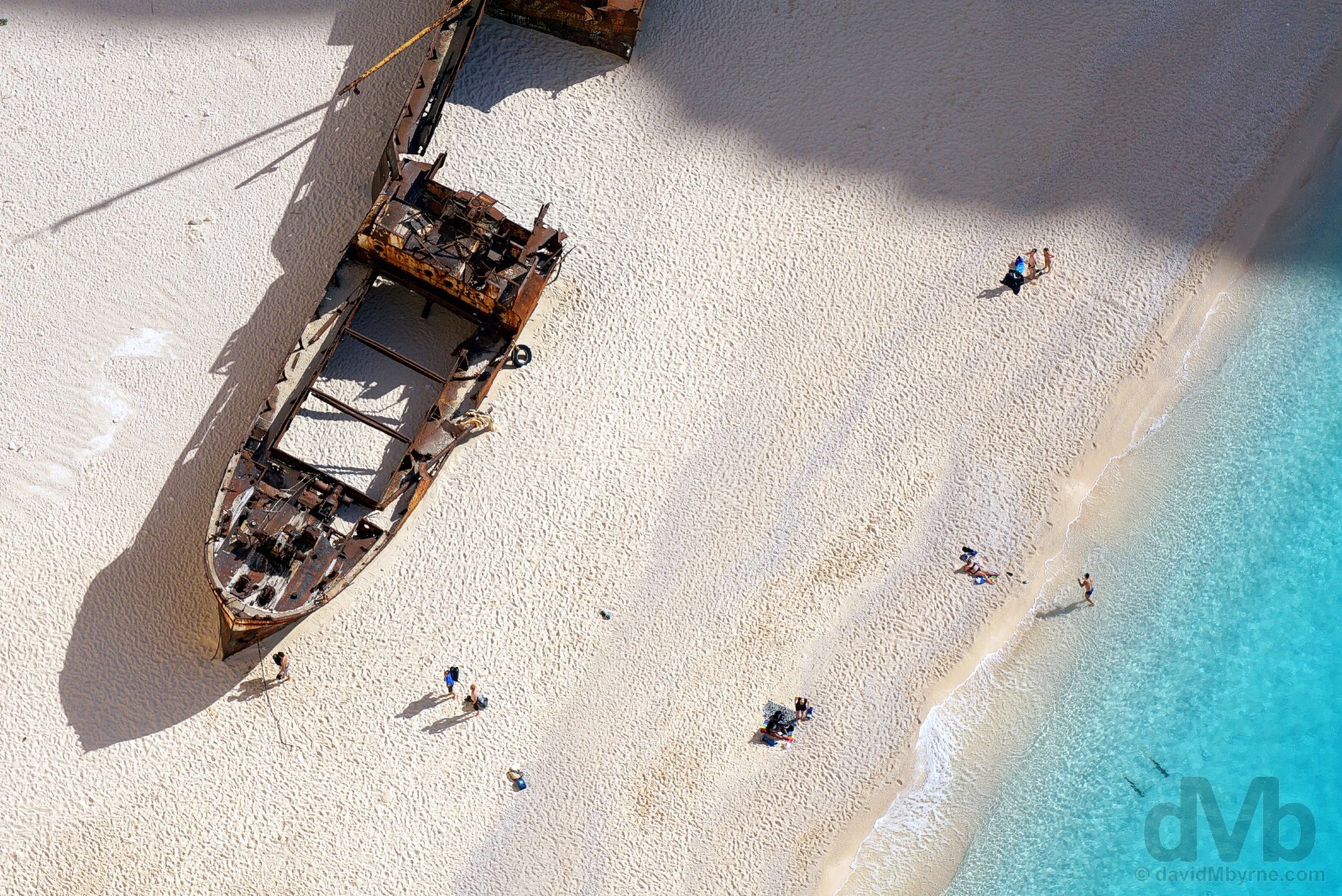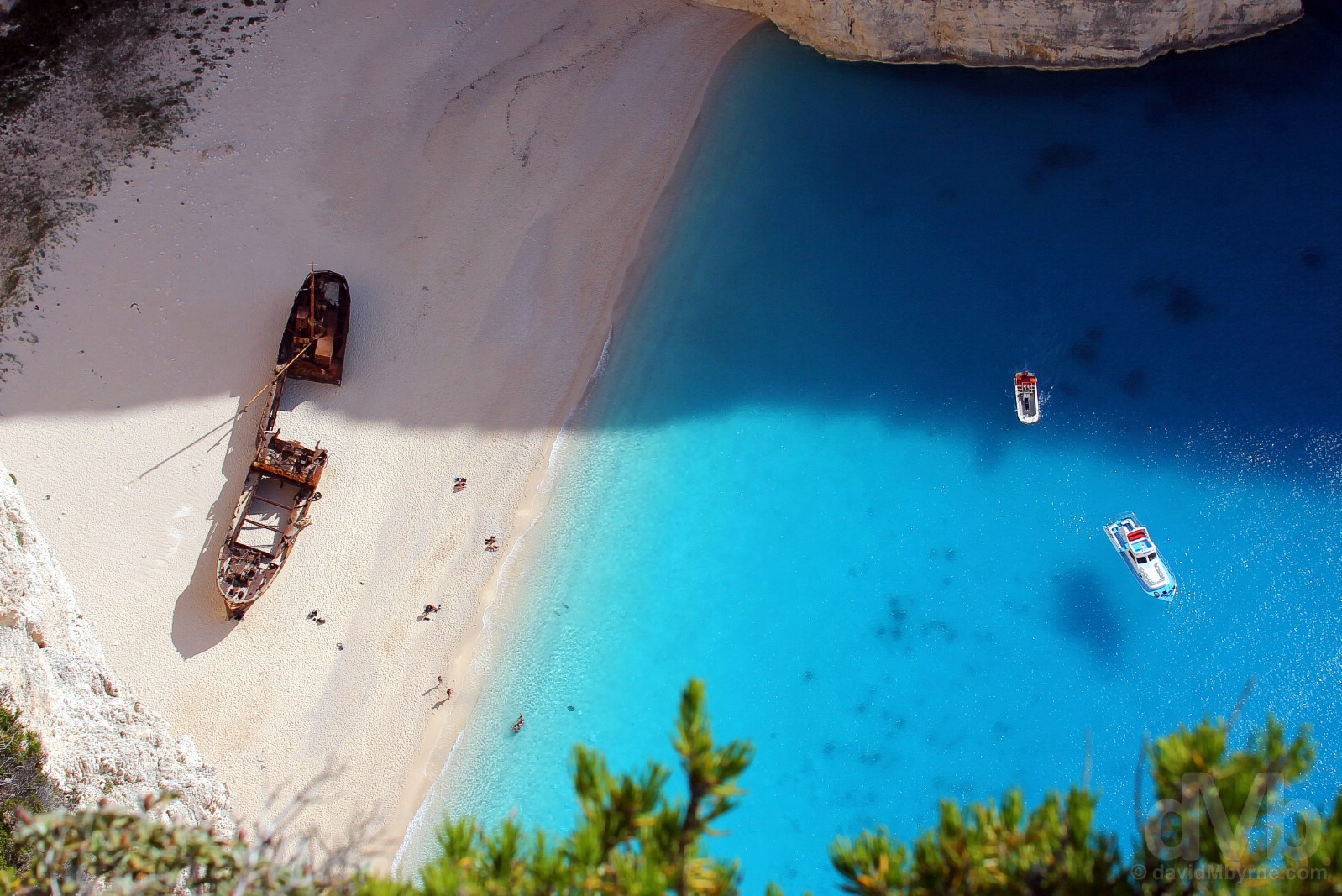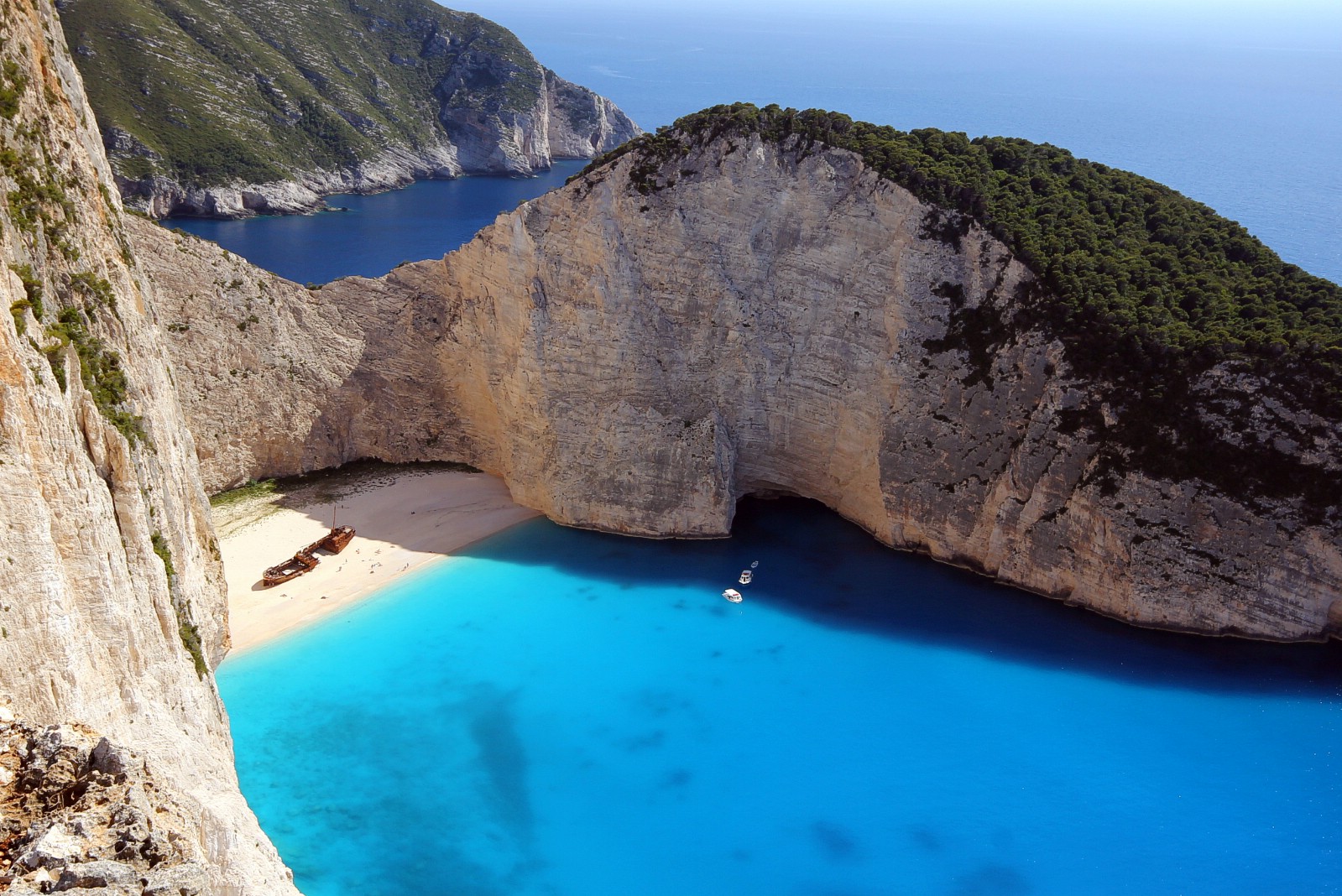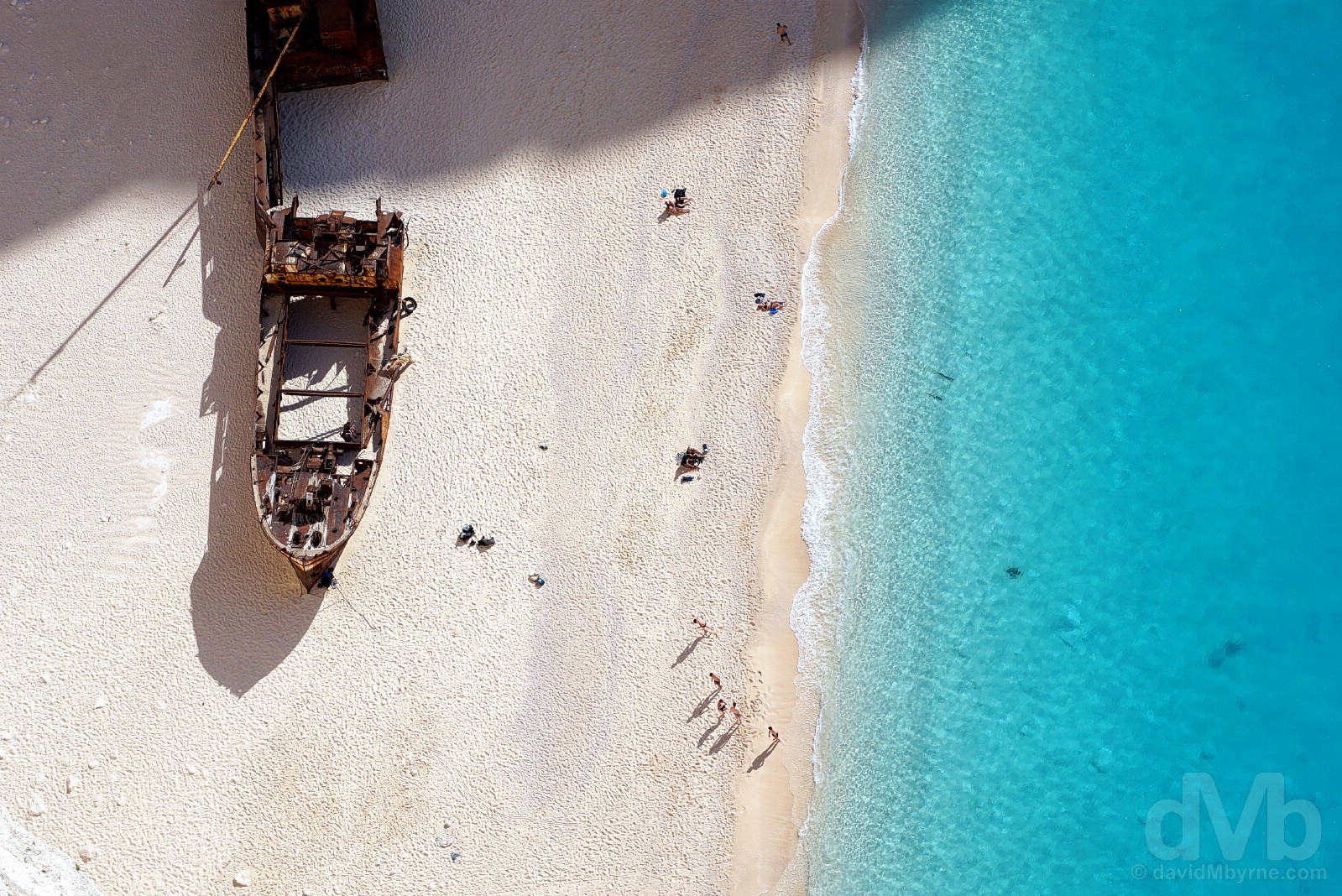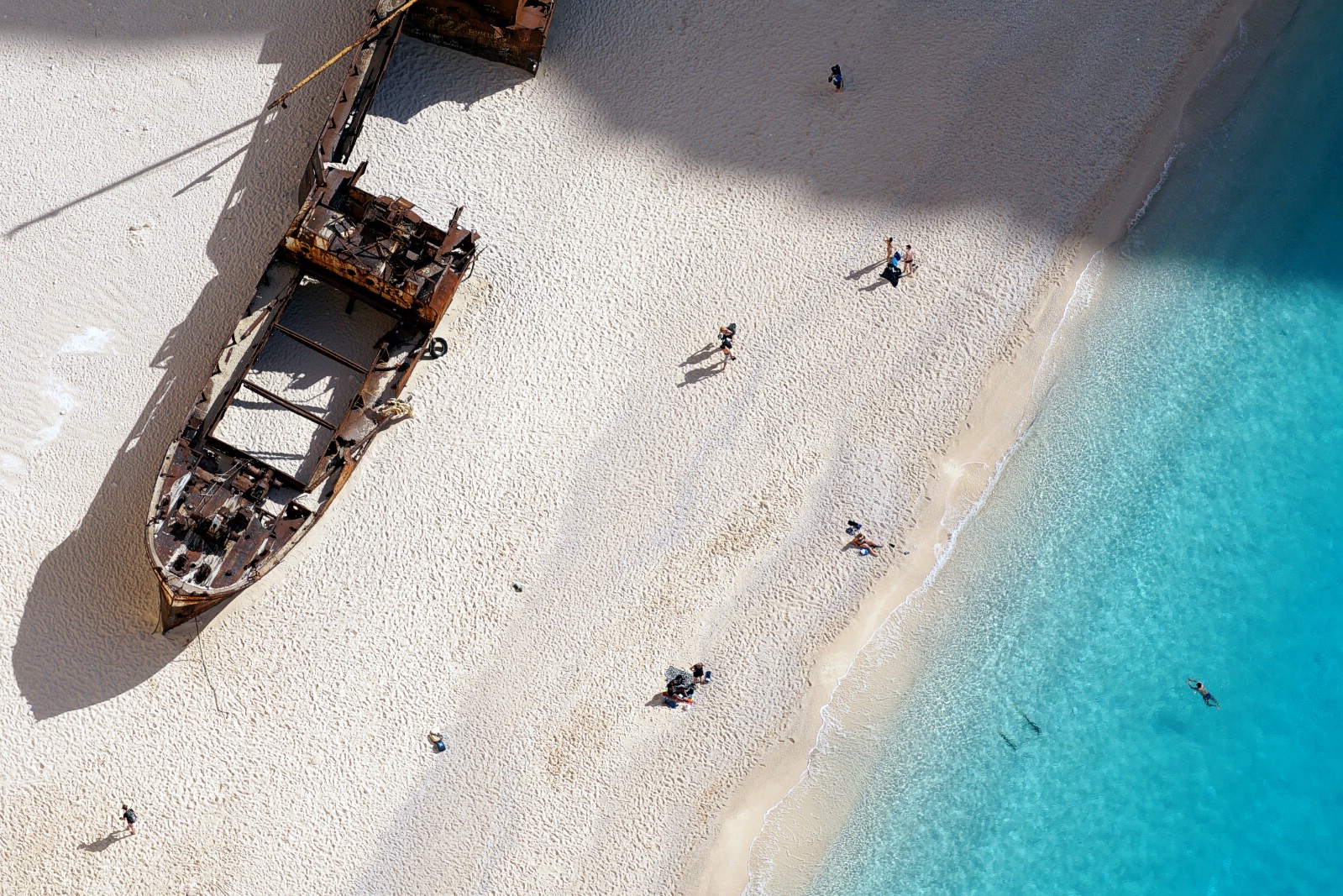Zákynthos, Greece
“A now-iconic image… the MV Panagiotis… blown off course during adverse weather in October 1980… sitting pretty here ever since in the middle of a secluded white-sand beach and surrounded by towering white limestone cliffs… it is beyond dazzling, easily one of the most picture-perfect scenes I’ve ever pointed a (zoom) lens at.”
Image || The rusting MV Panagiotis in Navago/Shipwreck Bay, Zákynthos. May 5, 2017.
Zákynthos, Greece
The lights were on but Budget Car Rental in Zákynthos Town, who I had a confirmed booking with, weren’t open when I dropped by this afternoon after disembarking the latest Greek ferry, this one from Kyllini, an hour on the ferry across the Ionian Sea on the Greek Peloponnesian Peninsula. I wasn’t late, arriving exactly as scheduled. Inexplicably closed (a Greek siesta, maybe), there wasn’t even a ‘We Couldn’t be Bothered’ or equivalent sign on the window to explain their absence.
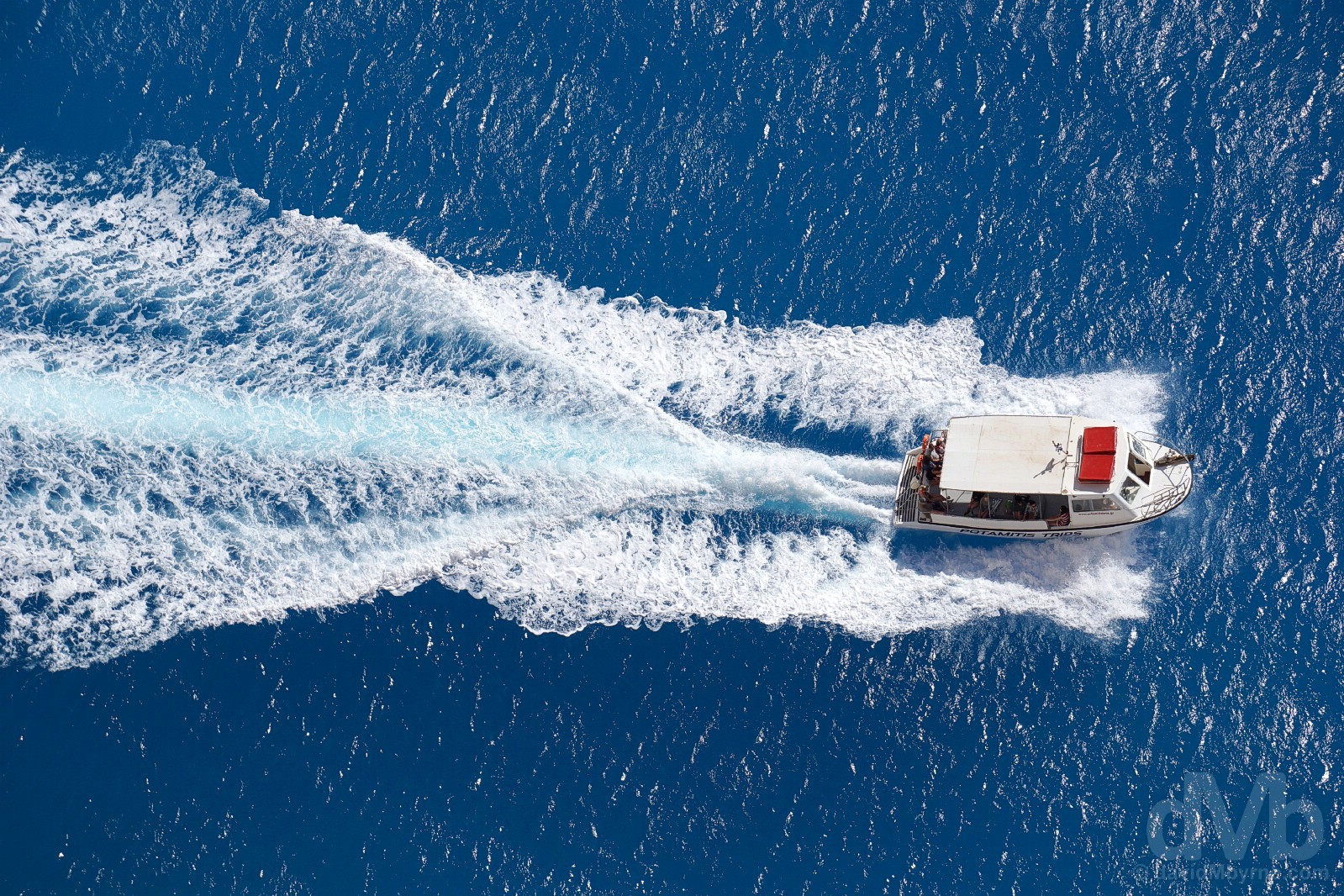
Boating in the waters off the west coast of Zákynthos/Zante, Ionian Islands, Greece. May 5, 2017.
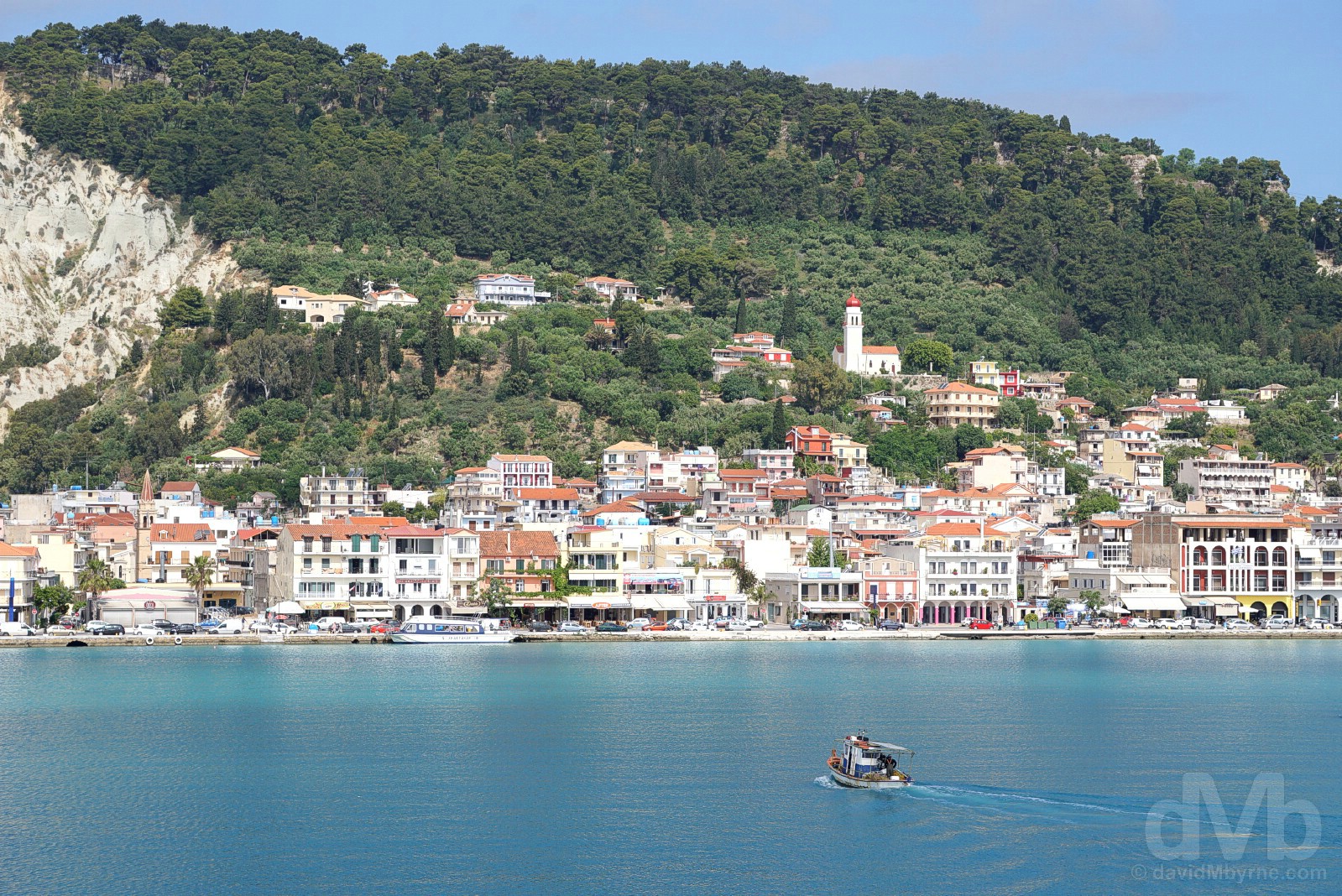
ZAKYNTHOS ISLAND | A sleepy Zákynthos Town as seen from the waters of the town’s port. Zákynthos, Ionian Islands, Greece. May 5, 2017.
Zákynthos, also commonly known by its Italian name of Zante (the Venetians held sway here for over 3 centuries, from 1484 to 1797), is the southernmost of the six core Ionian islands. It’s a Greek island of contrasts if ever there was one – the indiscriminate noise and commercialisation of the island’s resort-filled eastern and southern coasts (located north and south respectively of Zákynthos Town) are in diametric contradiction to the relative wilderness of the rest of the largely still-green and unspoilt island.
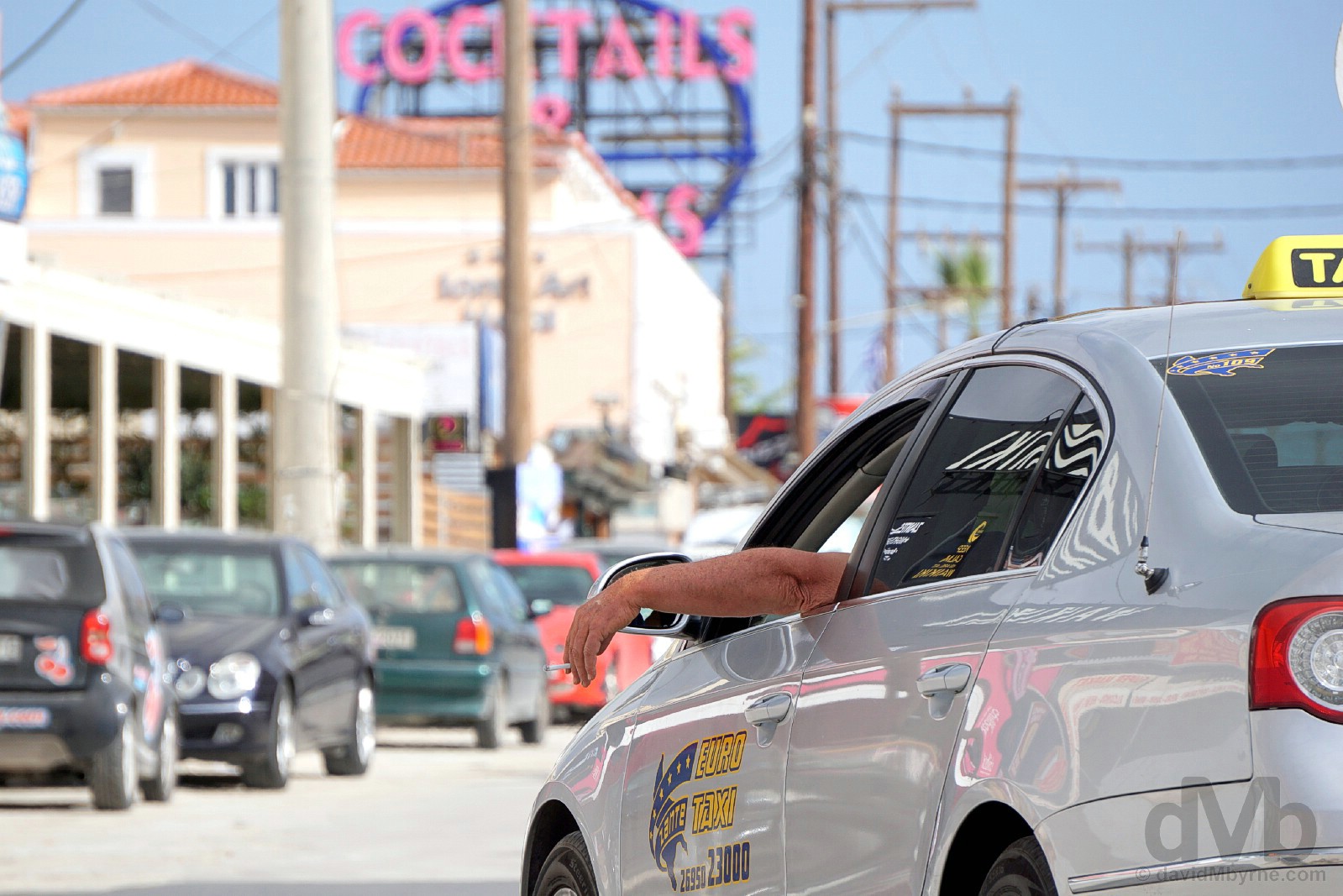
ZAKYNTHOS PARTY – LAGANAS | A taxi in Laganás, southern Zákynthos, the party island’s party central. Greece. May 6, 2017.
A holiday island, there’s plenty to do here on Zákynthos: There’s hiking; secluded beaches, some of the most beautiful in the world; cave exploration along the indented 123-kilometre-long coastline; water parks; ruins of Venetian-era stone castle in the hills above Zákynthos Town; and even turtles – the Ionian islands harbour the Mediterranean’s main concentration of endangered loggerhead sea turtles and Zákynthos is one of the region’s key breeding sites. All that said, it’s safe to say that the majority of those who venture here (and a lot do thanks to direct flights from many European locations, especially the UK) do so just for the party. The island’s biggest resort is Laganás, on Laganás Bay in the south, a 24-hour fun-in-the-sun location that keeps the beat going and doesn’t come up for air between mid-April and mid-October.
dMb Country Overview - Greece
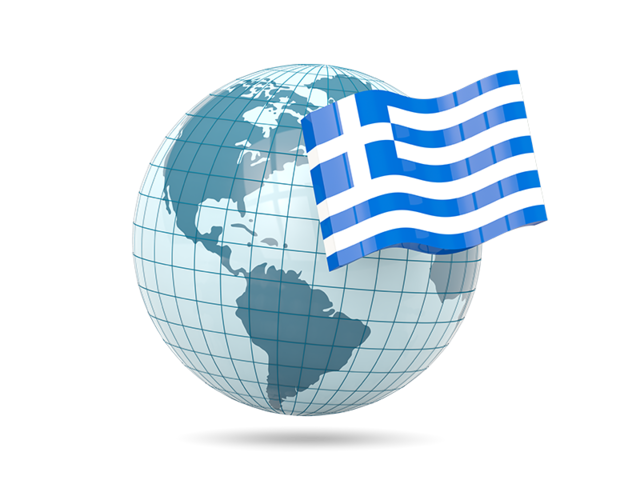 Greece
Greece
Region – Southeastern Europe/The Balkans (dMb tag: The Balkans). Capital – Athens. Population – 10.8 million. Official Language – Greek. Currency – Euro (€) GDP (nominal) per capita – US$21,000 Political System – Unitary parliamentary republic. EU Member? – Yes (10th member joined January 1981). UN Member? – Yes (founding member joined October 1945). G20 Member? – No. Size – 132,000 km² (Europe’s 15th largest country is approximately half the size of Ecuador, twice the size of Sri Lanka, and roughly the same size as the US southern states of Alabama and Louisiana. Topography – A mountainous interior (80% of Greece is mountainous), a long and convoluted coastline, and hundreds of offshore islands. Independence – 1830 from the Ottoman Empire following 1821 to 1830 Greek War of Independence. Brief History – From the eighth century BC, the Greeks were organised into various independent city-states, known as poleis (singular polis), which spanned the entire Mediterranean region and the Black Sea. Philip of Macedon united most of the Greek mainland in the fourth century BC, with his son Alexander the Great rapidly conquering much of the ancient world, from the eastern Mediterranean to India. Greece was annexed by Rome in the second century BC, becoming an integral part of the Roman Empire and its successor, the Byzantine Empire, which adopted the Greek language and culture. The Greek Orthodox Church, which emerged in the first century AD, helped shape modern Greek identity and transmitted Greek traditions to the wider Orthodox World. After falling under Ottoman dominion in the mid-15th century, Greece emerged as a modern nation state in 1830 following a war of independence. UNESCO World Heritage sites – 18. Tourism Catchphrase/Slogan – All Time Classic. Famous For – Endless coastline and beaches; shipping; democracy (born here); a classical and hallowed past; ouzo; sun-drenched islands; Alexander the Great; the Olympics; being the cradle of Western civilisation; food (tzatziki, feta, souvlaki, moussakas, yogurt, grapes, olives and olive oil); economic collapse & austerity.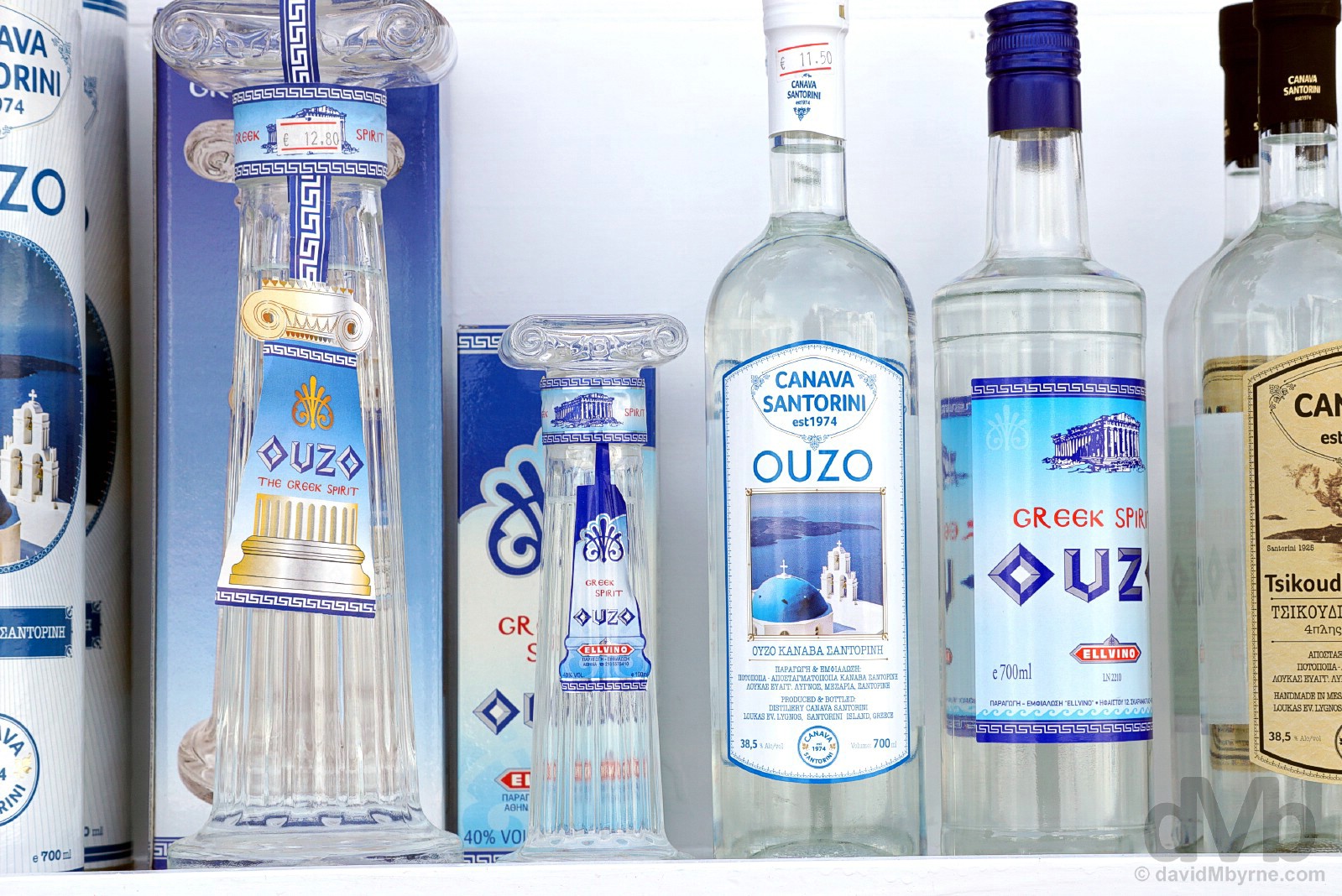
Ouzo for sale in the village of Oia, Santoríni, Cyclades, Greece.

Ouzo for sale in the village of Oia, Santoríni, Cyclades, Greece.
Highlights – Cyclades island-hopping and the remnants of all that ancient history (Greece boasts four millennia of sun-bleached ruins, artefacts, and architecture). Greece Titbits – At nearly 14,000 km (8,500 miles), Greece has the 11th longest coastline in the world; Greece is considered the cradle of Western civilisation, being the birthplace of democracy, Western philosophy, Western literature, historiography, political science, major scientific and mathematical principles, Western drama, and the Olympic Games (the country’s rich historical legacy is reflected in part by its 18 UNESCO World Heritage Sites, as of 2017); the Greek economy is the largest in the region with an economy larger than all other Balkan countries combined, this despite its well-documented economic battering and subsequent austerity measures.
Visits – 2 (May 2008 and April/May 2017). Where I Went/What I Saw – Thessaloniki; The Cyclades (Santoríni, Paros, Mykonos, Delos, Tinos); Zakynthos/Zante; Olympia; Sparta; Mystras; Athens.

ZAKYNTHOS CLIFFS & COVES | The limestone cliffs of northwest Zákynthos/Zante, Ionian Islands, Greece. May 5, 2017.
The towering erose limestone cliffs of Zákynthos/Zante island harbour many a secluded cove or beach (or cove and beach), especially here on this portion of the island’s northwestern coast. Most are only accessible via boat and one in particular has become something of a revered European bucket list travel destination.
Driving 40 kilometres from Zákynthos Town across the interior of the 400 km² mountainous island – from the southeast to the northwest – got me to the lofty heights of the cliffs overlooking now-iconic and picture-perfect Navagio Bay with its inviting teal waters, its powerdy white-sand beach, and its famous resident shipwreck (‘navagio’ in Greek).
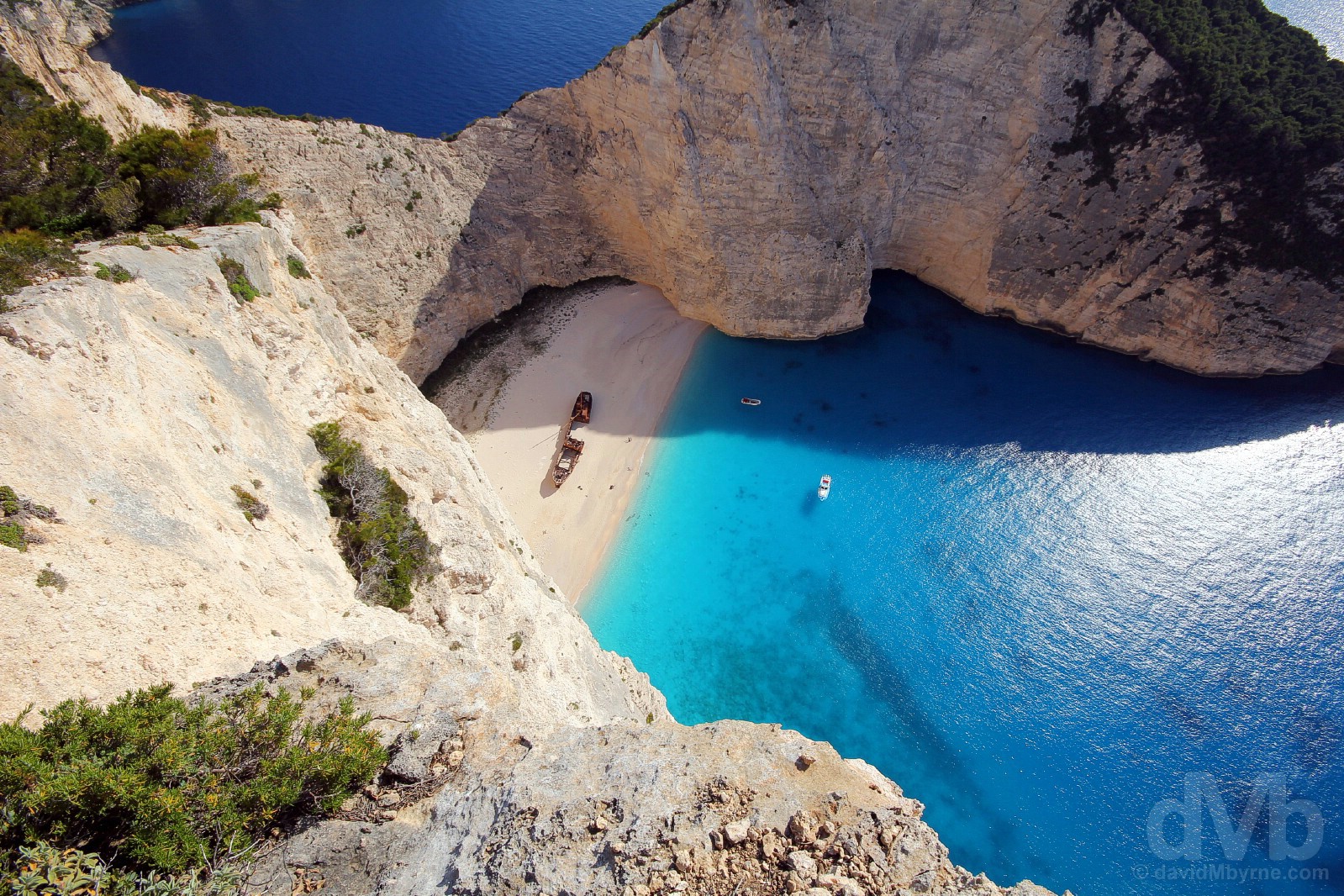
The wreck of the MV Panagiotis on the beach of Navagio/Shipwreck Bay, northwest Zákynthos, Ionian Islands, Greece. May 5, 2017.
Although Zákynthos island offeres up more to those who make the effort to come here, this vista was the only reason I found myself on this particular Greek island: it was the only reason for the stupid o’clock start to this particular day; it was the only reason for the 6-hour transit from Athens (five on a bus, one on a ferry); it was the only reason for the aforementioned car hire adventure; and it was the only reason for the drive across the island. And it was reason enough.
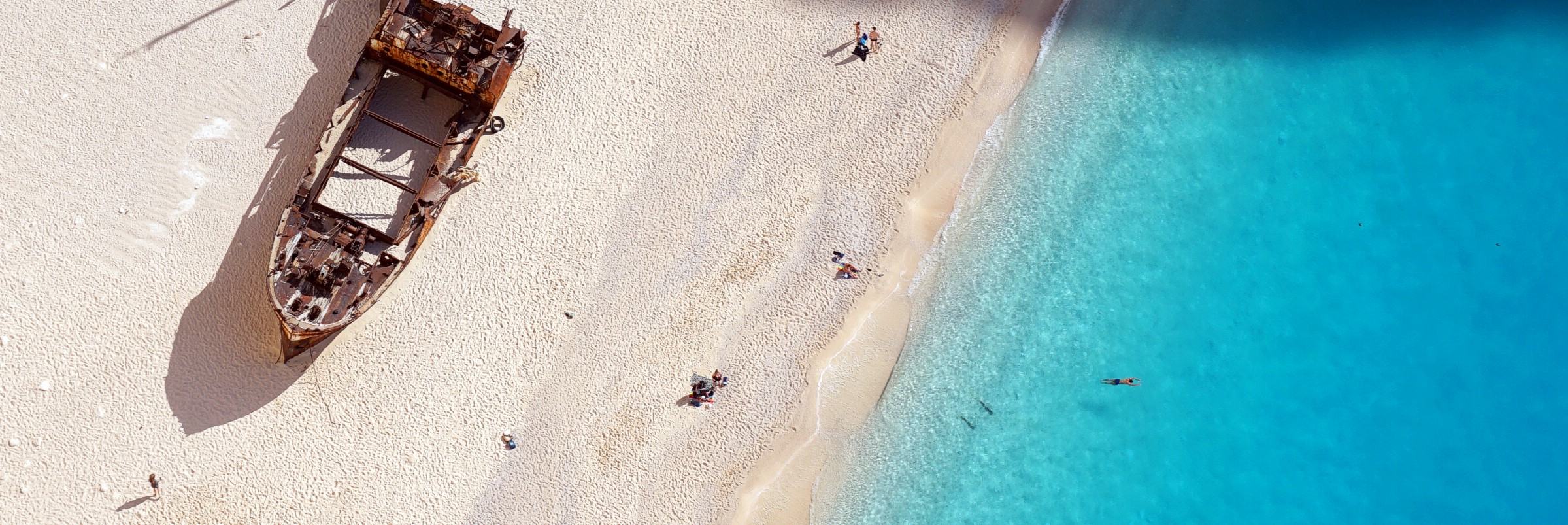
Bird’s eye view. The wreck of the MV Panagiotis, Navagio/Shipwreck Bay, Zákynthos, Ionian Islands, Greece. May 5, 2017.
A now-iconic image, you’ll invariably find in every Greek tourism brochure, not to mention all over social media, lesser quality depictions as you’ll see here of Navagio Bay and its rusting MV Panagiotis. Rumour has it the Panagiotis, built in Scotland in 1937, was a smuggling vessel being pursued by the Greek Navy when it was blown off course during adverse weather in October 1980 (Navagio Bay is also known as Smugglers Bay/Cove). Sitting pretty here ever since in the middle of a secluded white-sand beach and surrounded by towering white limestone cliffs (it’s the sunlight reflecting off of those same cliffs which helps to give the crystal-clear water of the bay an almost neon glow at certain times of day, or around about when I was here in late afternoon – these images were captured approaching 18:00), the setting really is quite the picture. The scene – a bird’s eye view of which is afforded to all from the precarious clifftop overlooks high, very high, above the cove – lives up to all the hype; it is beyond dazzling, easily one of the most picture-perfect scenes I’ve ever pointed a (zoom) lens at.
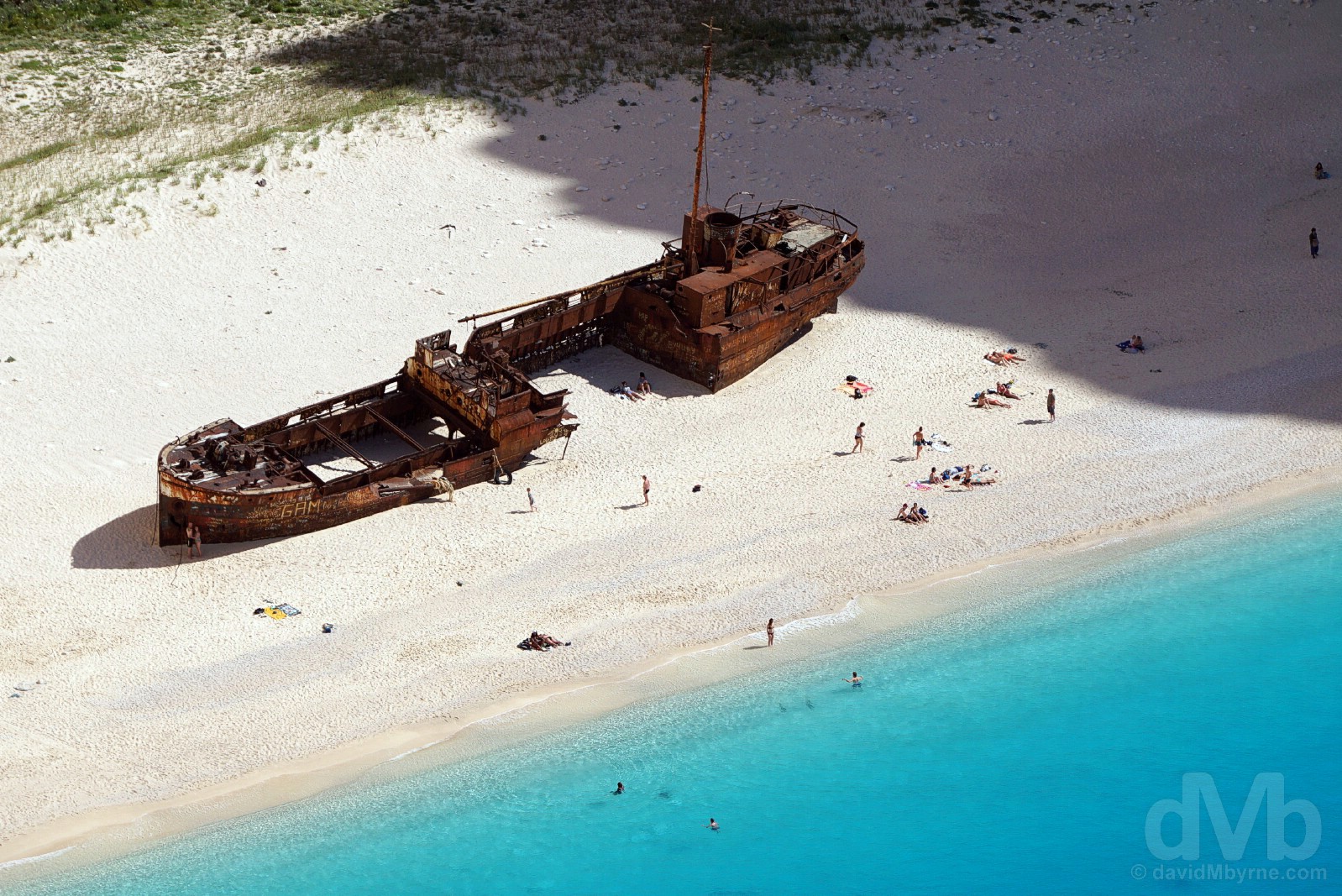
The wreck of the MV Panagiotis, Navagio/Shipwreck Bay, Zákynthos, Ionian Islands, Greece. May 5, 2017.
Only accessible by boat (or by jumping off the surrounding cliffs – the cove is a popular base jumping location), excursions to Navagio Bay are, as you might imagine, big business on Zákynthos and if I were the Greeks I’d be preserving what’s left of the partly-submerged MV Panagiotis to ensure it continues to attract tourists away from the busier southern and eastern regions of the island.
Signing Off | The Complete Zákynthos Gallery


